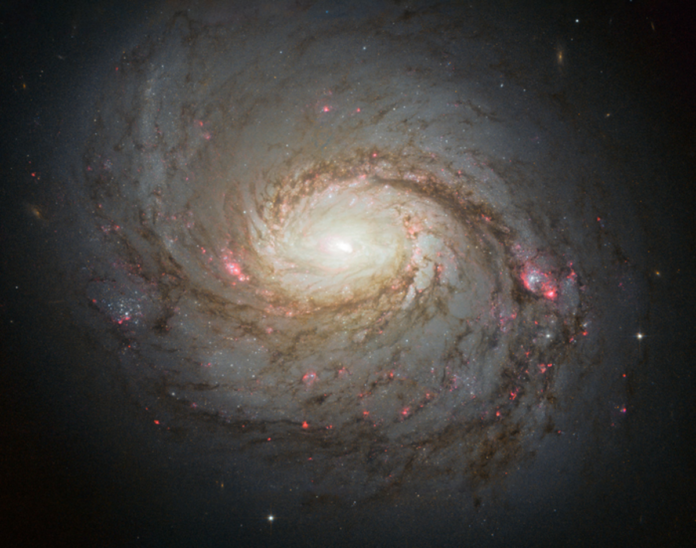Astronomers have traced high energy neutrino particles to the active galaxy Messier 77, adding to the known point sources of these difficult-to-detect particles.The discovery, in turn, opens the door to neutrino astronomy, using neutrinos to explore otherwise hard to observe aspects of the universe, such as the dusty occluded area around the supermassive black hole at the center of Messier 77. When supermassive black holes at the centers of the galaxy consume matter, they emit massive amounts of radiation, including gamma rays, and their galactic centers are considered ‘active.’But where gamma rays emitting by Messier 77 are blocked by the dense matter shrouding the galaxy’s core, the nearly massless, neutrally charged neutrino can slip through.”Recent models of the black hole environments in these objects suggest that gas, dust, and radiation should block the gamma rays that would otherwise accompany the neutrinos,” Hans Niederhausen, Michigan State University postdoctoral associate and analyst for a new study published Thursday in the journal Science, said in a statement. “This neutrino detection from the core of [Messier 77] will improve our understanding of the environments around supermassive black holes.”Neutrinos are similar to electrons, but being neutrally charged and possessing almost no mass, they interact very weakly with other matter and energy. They come in two forms, low energy and high energy neutrinos.Low energy neutrinos are produced by thermonuclear processes like those in the heart of the Sun. But high energy neutrinos, which means they have been accelerated to much higher speeds, are believed to be formed by high energy cosmic ray collisions in space.’Revealing the origin of cosmic neutrinos and the relationship among neutrinos, gamma rays, and cosmic rays is crucial to deciphering the fundamental processes that occur throughout the Universe,’ Pennsylvania State University professor of Physics Kohta Murase wrote in a perspective appearing in Science alongside the new Messier 77 findings.To detect high energy neutrinos, the National Science Foundation IceCube Neutrino Observatory buried sensitive instruments in 1 billion tons of ice a mile and a half beneath the surface of Antarctica. The IceCube observatory detected the first known point source of high energy neutrinos in 2018, TXS 0506+056, an active galaxy emitting jets of radiation directly at Earth, which is about 4 billion light years away.Messier 77 is much closer at 47 million light years from Earth, making it one of the closest identified sources of high energy neutrinos.The IceCube Observatory detected 80 high energy neutrinos from Messier 77, and with further research, Messier 77’s neutrino emissions could become the standard against which future neutrino astronomical observations are compared.’One neutrino can single out a source. But only an observation with multiple neutrinos will reveal the obscured core of the most energetic cosmic objects,’ University of Wisconsin-Madison professor of Physics principal investigator of the new study Francis Halzen said in a statement. Although 80 neutrinos is not yet enough to answer all his team’s questions, ‘they definitely are the next big step towards the realization of neutrino astronomy.’
Nearby galaxy a source of high energy neutrinos, scientists say
Sourceindependent.co.uk
RELATED ARTICLES


